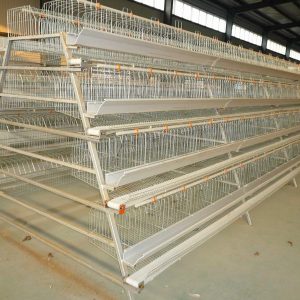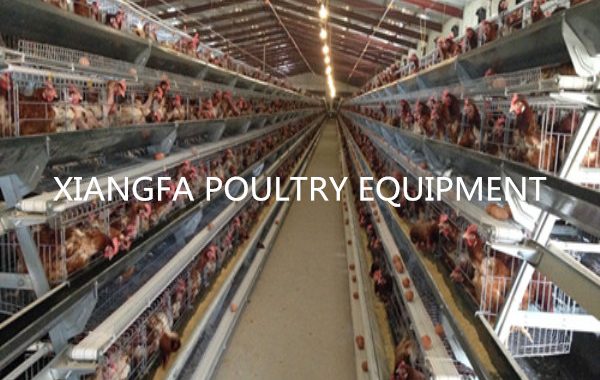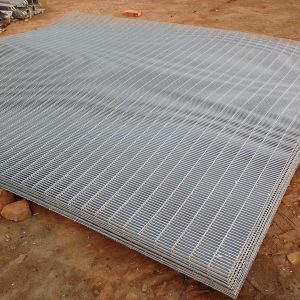
Analysis of the precautions for feeding dry chickens
Every kind of larva in the animal kingdom needs special care, and the chicks in poultry are no exception. What aspects should be paid attention to when raising chicks? How to accurately grasp the different growth stages of chicks and take different measures when raising them?
Chicks rearing management is an important part of the chicken raising process, which has a great relationship with the survival rate of the chicks and the entire chicken production. Therefore, in the production of chickens, corresponding measures must be taken according to the physiological characteristics of the chicks to improve the survival rate of the chicks.
1. Adjust suitable temperature and humidity to improve the survival rate of chicks
The hatchling chicks are small, delicate, short hairy, low heat preservation ability, and the function of regulating body temperature is not perfect. It is gradually complete until 3-4 weeks of age. Therefore, doing a good job in cold protection and heat preservation and adjusting the appropriate temperature and humidity is the key to raising chickens and improving their survival rate. The suitable temperature for chicks is 30-32°C. In the future, the temperature should be lowered by 1-2°C every 5 days. After one month of age, if the outside temperature is above 20°C, it can be warmed naturally, otherwise it should be kept warm.
Whether the temperature is suitable or not, you can observe the morphological performance of the chicks: if the chicks are crowded in a pile, do not like to move and eat, they make “squeak, squeak” sounds from time to time, and the sound is long and weak, which is the performance of the temperature is too low; if the chicks are drooping , Opening mouth panting, flapping wings to grab water, and making “chirp, chirp” sounds from time to time. The cry is sharp and short, which means that the temperature is too high. Only the chicks are evenly distributed, and their activities and eating are normal. The feathers are smooth and bright. The appearance of a strip, the head and neck straightened during sleep, and quietness indicate that the temperature is suitable.
There are many ways to adjust the temperature of chicks. Small groups of chickens can be placed in cartons or wooden boxes with hay or cotton batting, hot water bottles can be placed under the litter, or electric lights can be used for heating. Large groups of chickens can be conserved in a greenhouse.
In addition, if the brooding house (room or box) is too dry, the amount of water in the chicken body will be large, which is not conducive to the growth of the chicks; if the humidity is too high and the air is not circulating, the chicks are prone to infection. The proper relative humidity is 55-65%. The adjustment method, as long as there is continuous water in the drinking fountain, it can meet the requirements; when the humidity in the mild rain season is too high, the dry litter can be thickened and the wet litter can be cleaned in time.
2. Timely water supply and start of food, do a good job of diet matching
Before the chicks start to eat, drink a 0.01-0.02% potassium permanganate aqueous solution (light red is enough) to remove meconium and disinfect the stomach. Then feed 8% sucrose water to increase the survival rate of the chicks. Finally feed. Then, you should always supply drinking water to avoid diarrhea due to lack of water. Drinking water should use warm water first, and then gradually change to fresh, clean and cold water to prevent the chicks from wetting the feathers.
Feeding at the young stage should not be restricted by the number of meals, and should be allowed to eat freely, and then gradually reduce the number of feedings, and feed it 4 times a day after the age of 20 days. Feeding should not be too wet, and should be loose. The amount of feed increases with the age of the chicks, but it is not necessary to feed them too full each time (80% full is appropriate) to avoid indigestion.
Drink combination of chicks. According to its nutritional requirements: higher energy and higher protein requirements. In general diets, cereals (corn, broken rice, etc.) are 50-60%; bran (rice bran, wheat bran, etc.) are 5-10%; oil cakes (peanut cake, bean cake, sesame cake, etc.) are 20-25%; animal feed (fish meal, meat meal, etc.) 7-20%; bone meal, shell meal 4-5%; salt 0.3-0.5%. The green feed is additionally fed, especially when there is no vitamin additive, the green feed cannot be cut off. The feeding amount is about 30-50% of the concentrated feed.
The feed consumption of chicks of different ages (g/each, per day) varies according to different breeds, individual development, and feeding methods. It is roughly: 1-10 days old is 8 grams, 20 days old is 15 grams, 25 The age is 16 grams, the age of 30 days is 30 grams, and the age of 50 days is 40 grams.
3. Regulate suitable light to promote the development of chicks
Sunlight can increase temperature, increase appetite, facilitate digestion, promote calcium and phosphorus metabolism, maintain normal growth and development, and can kill bacteria. However, the strong light and the long time (including artificially enriched light) can easily cause the chicks to exercise excessively and not get proper rest, which will affect the normal development of the chicks. Therefore, shading measures should be taken to allow the chicks to get a proper rest to facilitate digestion, weight gain and moulting, and at the same time to prevent eccentricities such as anal pecking and feather pecking.
The appropriate light and exercise time is: chicks within one week of age can be lighted 24 hours a day, and they will move for 10-20 minutes before and after each feeding. After a week, if the weather is clear and the temperature permits, natural light is sufficient during the day. It is best to get in the sun once a day for about half an hour in the first one or two days, and then gradually extend it. Before the 20th day of age, the chicks can be active for 6-7 hours a day (including the feeding time). After the 20th day of age, they can be active all day on sunny days, but it is advisable to take back shading and rest for 2-3 hours during the hot season.
In the process of chicken feeding, disease prevention and treatment cannot be ignored. It is also possible to add some preventive drugs such as oxytetracycline to the diet.



